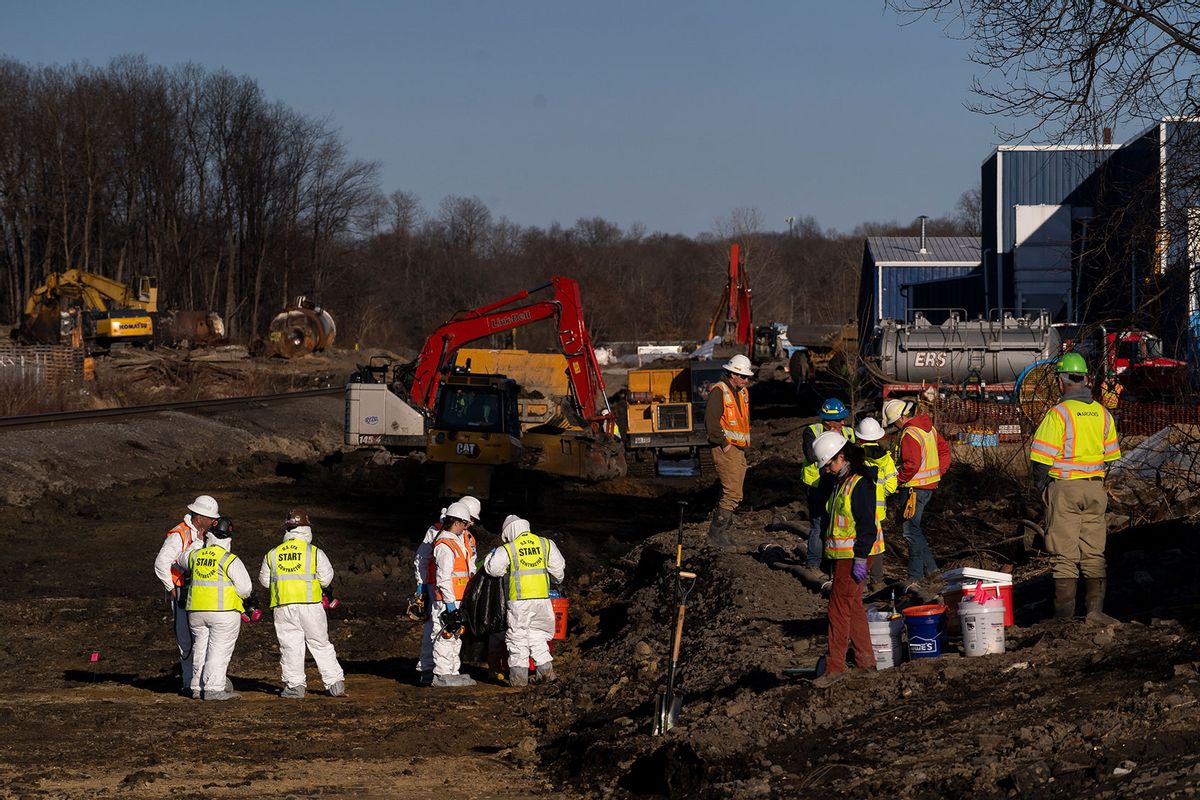40,000 pounds of contaminated soil being transported away from East Palestine, Ohio was spilled in the eastern Ohio county of Columbiana at 1 PM on Monday, according to several local news sources. The spill occurred as a truck driver, 74-year-old Phillip Falck of McDonald, Penn., was driving a vehicle full of hazardous material that originated in East Palestine. The northbound tractor-trailer traveled off of the roadway and hit both a ditch and utility pole before overturning onto its right side. The truck overturned on State Route 165 just north of Waterford Road.
The spill continues a recent trend of repeated hazardous material leaks, explosions and spills from trucks and trains — which critics say reflects the decades-long fight to deregulate the transportation industry, spearheaded by lobbyists working for corporations in that sector.
40,000 pounds of contaminated soil from East Palestine, Ohio was spilled all over the eastern county of Columbiana at 1 PM on Monday.
Both the local fire authority and the Ohio Environmental Protection Agency were called to the scene. The Ohio EPA says that the spill was contained and is not a threat to local waterways. McDonald, who suffered minor injuries, was cited for operating a vehicle without reasonable control.
The chemical pollution horrors began on Feb. 3rd, when a train of about 150 freight cars crashed and exploded in the town of East Palestine. Many of those cars included hazardous materials, and over the ensuing weeks officials in eastern Ohio and western Pennsylvania — including Ohio Gov. Mike DeWine (R) and Pennsylvania Gov. Josh Shapiro (D) — scrambled to control the situation. The Environmental Protection Agency performed soil and water tests to make sure that the hundreds of potentially harmful chemicals caused by the train accident did not poison the thousands of nearby civilians. Former President Donald Trump appeared in the area himself, and the derailment stirred up debate about the allegedly outsize influence of railroad lobbyists in Washington. The issue has even managed to cross the Mason-Dixon Line; residents of Harris County, Texas learned to their alarm in late February that contaminated water used to put out the fires from the train wreck was being injected underground in their area.
Want more health and science stories in your inbox? Subscribe to Salon's weekly newsletter The Vulgar Scientist.
There are a wide range of chemicals that scientists are concerned about from the East Palestine crash, including vinyl chloride, 2-butoxyethanol, ethylhexyl acrylate, butyl acrylate and isobutylene.
Vinyl chloride, which is used to make plastic substances like vehicle upholstery and plastic kitchen ware, is a highly-flammable toxic gas with a mildly sweet odor that is extremely toxic when inhaled. It can significantly damage the respiratory and central nervous systems, and when metabolized by the liver, it can create a chemical known as chloroethylene oxide that is linked to increased risk of tumor formation. Excessive exposure to vinyl chloride is consequently linked to lung, liver, brain and blood cancers. Vinyl chloride is also dangerous when burned, as it produces toxic gasses like phosgene gas and hydrogen chloride.
East Palestine resident Linda Murphy learned there were traced of vinyl chloride in her urine almost two weeks ago, according to a local ABC news affiliate, and reported that she developed symptoms despite avoiding drinking public water. She told the news station, "Just felt like my eyes were tired and swollen, extremely sore throat, almost like I drank hot liquids. My voice was going in and out. I had a lot of trouble breathing, difficulty taking a deep breath, especially at night."
2-butoxyethanol, also known as ethylene glycol monobutyl ether, is a solvent used to make paints and varnishes that can irritate the eyes and lungs when inhaled. It has also been shown to cause cancer in animals, although there is no data about its effect on humans.
Then there's ethylhexyl acrylate, a chemical used in paint binding and stain resistors that can irritate the lungs, throat, eyes and skin if inhaled or touched. Butyl acrylate is a pungent but colorless liquid that is used in adhesives, caulks and sealants (as well as paints) and — in addition to irritating the respiratory tract and skin — can trigger difficulties in breathing and irritation of the eyes and skin.
Officials in the Ohio city of Steubenville detected butyl acrylate in its water, but added they would remove it from the river using powder activated carbon.
Meanwhile, isobutylene is a flammable gas used to make O-rings, window seals and bottle stoppers. It can damage the respiratory, cardiovascular and nervous systems.
Read more
about the East Palestine train crash:



Shares